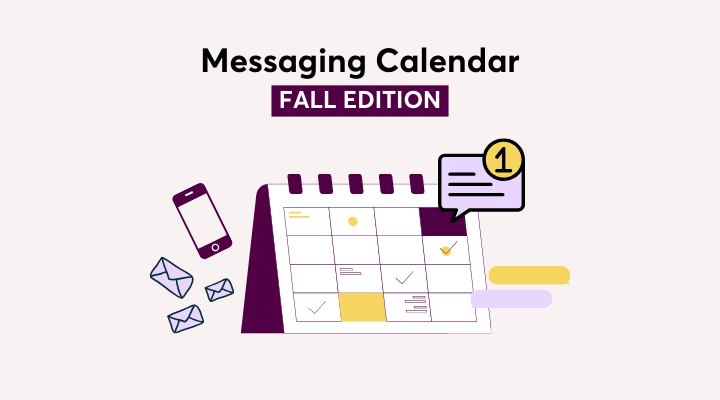Autumn is one of the most dynamic periods of the year for businesses. From the back-to-school season in September to Black Friday and Cyber Monday in November, there are countless opportunities to engage your audience and boost sales. However, if you wait until the last minute to plan your campaigns, you’ll likely fall behind the competition. The companies that win the season are the ones that start preparing early, ideally from August.
In this article, we’ll explore why you need a messaging calendar, how to build one step by step, which key dates to cover, and why August is the key month to get started.
Why you need a messaging calendar
A messaging calendar is essentially your “roadmap” for communicating with customers. Rather than sending fragmented messages, you have an organized plan for when, where, and how you’ll communicate. This ensures consistent messaging, meets consumer expectations, and saves valuable time. Most importantly, it increases your chances of success, as you have the time to segment your audience and optimize your campaigns.
Benefits of a Messaging Calendar:
-
Ensures consistency in communication.
-
Reduces the risk of overloading or “silencing” your audience.
-
Provides time for testing and optimization.
-
Allows for better audience segmentation.
-
Makes managing high-demand periods easier.
Key Fall Moments
The fall season is full of commercial milestones worth including in your communication plan. Back-to-school in September marks the start, as consumers look for products and deals for the new season. In October, the Halloween vibe provides an opportunity for themed campaigns, while November is dominated by the powerhouse duo of Black Friday and Cyber Monday—the biggest shopping days of the year. Don’t forget Singles’ Day on November 11, which is gaining traction in e-commerce. Immediately after, the holiday shopping season begins, with consumers searching for gifts earlier than ever!
Fall Milestones:
-
September: Back-to-School campaigns
-
October: Halloween promotions and themed activities
-
November 11: Singles’ Day (ideal for eCommerce)
-
Late November: Black Friday & Cyber Monday
-
Early December: Start of Christmas campaigns
How to plan a fall messaging calendar
Start by setting clear goals: do you want to increase sales, boost traffic, or build loyalty? Your goals will guide how you structure your plan.
Next, choose the channels you’ll use. SMS is ideal for immediate, urgent offers; Viber allows rich content with images and buttons for more interactive campaigns; while email is perfect for more detailed communications, such as shopping guides.
Audience segmentation is equally critical. It doesn’t make sense to send the same message to everyone. You can target loyal customers with exclusive offers while giving new subscribers special welcome discounts.
As for timing, August is the preparation month: gather subscriptions, build your contact list, and plan your first campaigns. In September, focus on back-to-school actions. In October, prepare themed messages for Halloween, and from early November, start teasers for Black Friday, continuing into Cyber Monday. Then transition to a Christmas mood and adjust your messaging accordingly.
The content you create should be varied. Combine exclusive discounts with helpful ideas or gift suggestions, reminders for limited-time offers, and personalized recommendations based on previous purchasing data.
Leverage multiple communication channels
The power of a messaging calendar lies in its ability to combine different channels to reach your audience wherever they are. Think of SMS as the fastest, most direct way to capture attention: with speed and high open rates, it’s ideal for flash offers and urgent reminders. Viber allows you to “dress up” your messages with images, buttons, and links, making them more attractive and interactive. WhatsApp, the world’s most popular chat app, adds a personal dimension: one-to-one personalized conversations and instant support that builds trust. And of course, email remains the channel for in-depth content: newsletters, shopping guides, and detailed presentations that complement more immediate messaging.
When these channels work together within a unified plan, the customer experience becomes more complete, and your campaigns gain greater impact.
Why August is the key month
Early preparation gives you a significant advantage. You have time to test different messages, measure performance, and adjust campaigns before the November rush. At the same time, you can grow your subscriber list to reach a larger audience for major promotions. Most importantly, you operate in an organized way, not under pressure—something your audience perceives through more polished and targeted messages.
With proper preparation from August, audience segmentation, and the use of channels like SMS, Viber, and email, you’ll always stay one step ahead.
And with Apifon’s platform, everything becomes simpler: you can plan, manage, and optimize your campaigns all in one place. Start building your fall messaging calendar with Apifon today.

